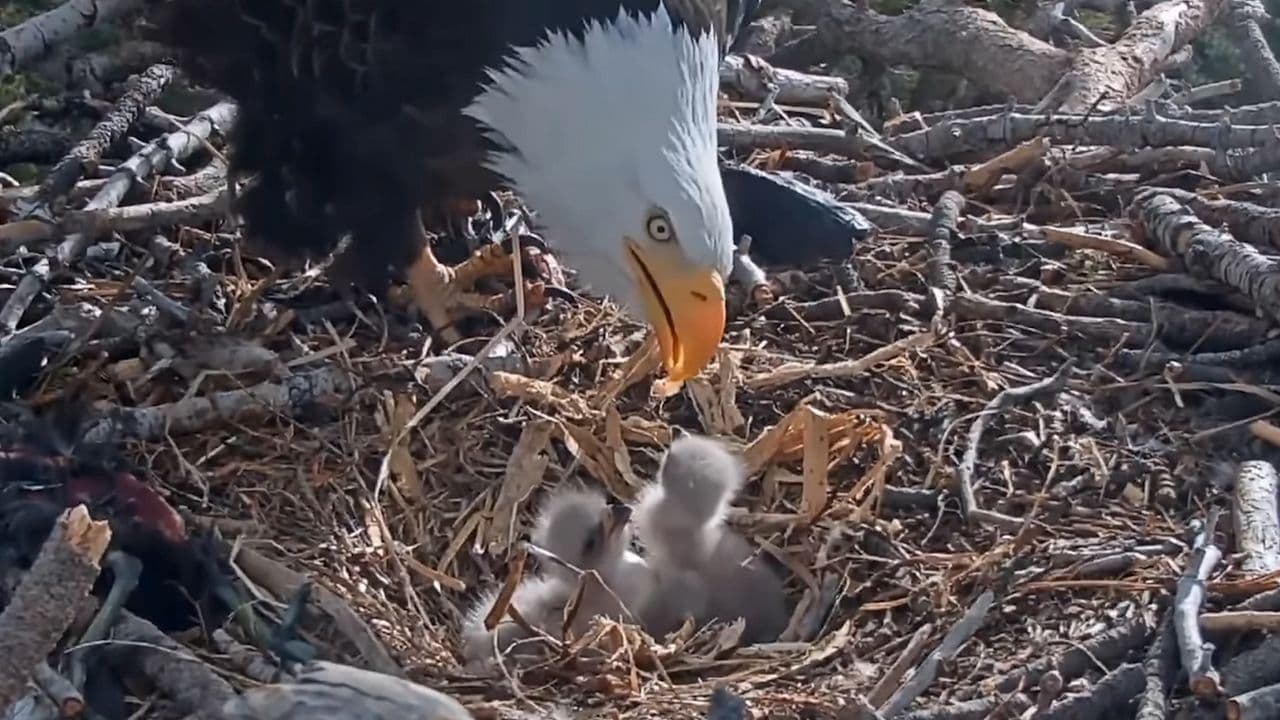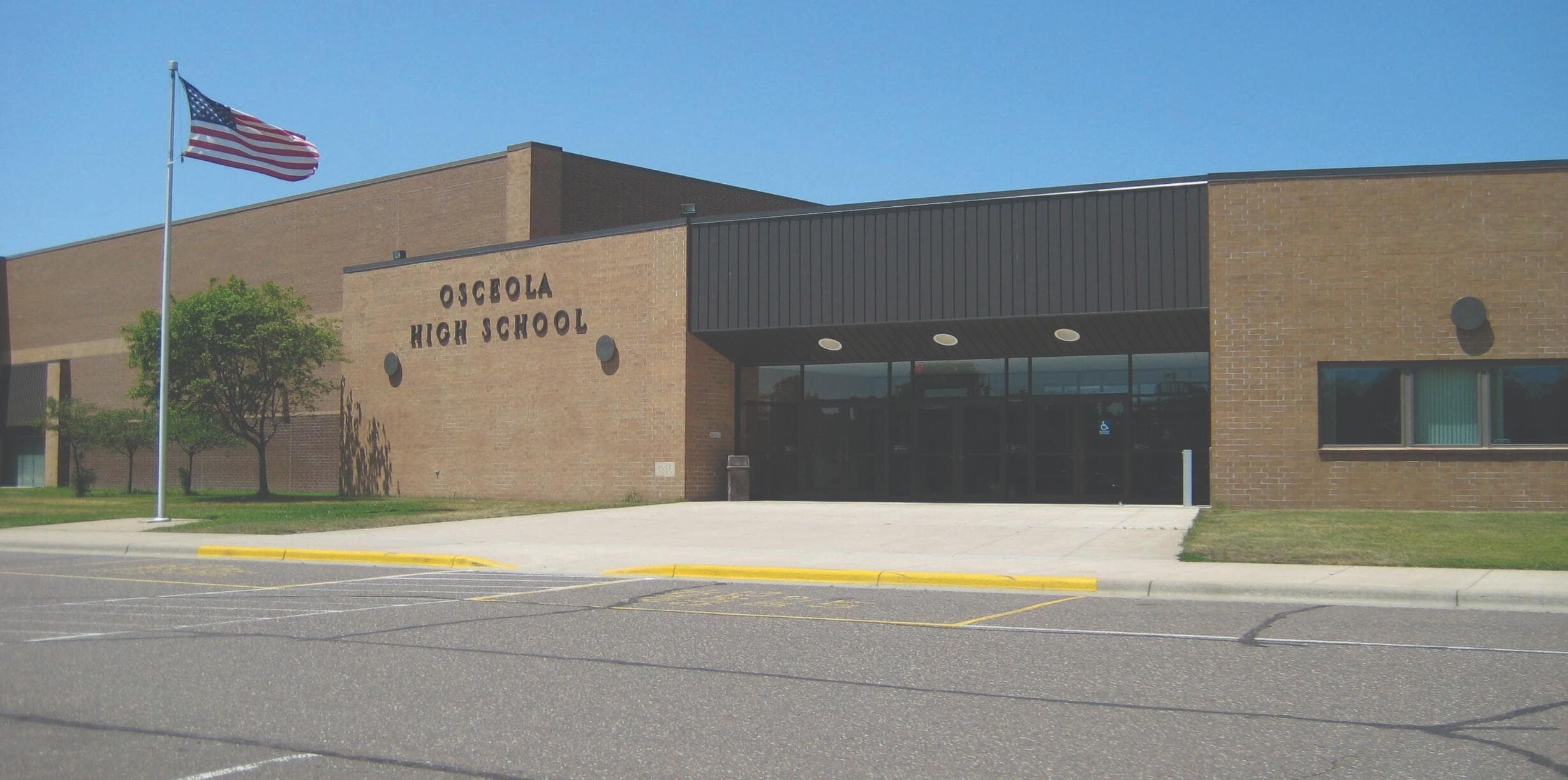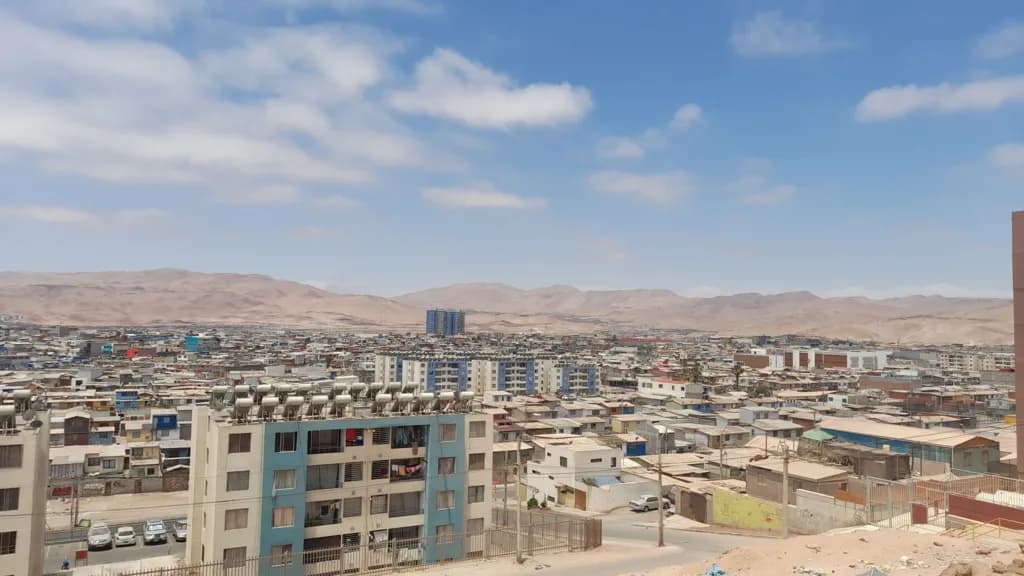
Amazing
10 Young Girls Who Are Knocking Down Society’s Walls and Influencing Change
Let’s be truthful: females and minorities are at a disadvantage. In fact, unless you are a Caucasian male, you face unfair challenges. Many people simply accept this as “just the way it is” and find a way to deal with it. That seems like the easiest thing to do: take the path of least resistance, try not to rock the boat, accept our lot in life. And, with that, we go on about our days and lives, finding a way to live the best we can.
Then, there are those of us who simply refuse to accept how it is, and these are often what we consider heroes. They are the ones who take the road less traveled, go against the grain, and rock every boat necessary to reach their desired outcomes. They are the trailblazers, and we admire their strength and courage and dedication. And why not? They are admirable people.

What, though, is more impressive than an adult blazing new trails and working hard to change something? When a young female does it. These amazing girls have multiple “strikes” against them: their gender, some of them their race, and- of course- their ages, but they let none of those things stop them from reaching their goals. Consider the ways in which they are working for things they believe in.
Greta Thunberg
This young lady knows that protecting the planet lies in the hands and actions of its inhabitants. At only 16, she addressed the UN on the topic of climate change. Most of us are too nervous to address our middle school class or coworkers in a large meeting. Greta put her game face on and became the leader of what is known as the largest climate strike in history.
Mikaila Ulmer
Have you ever been stung by a bee? Or, better yet, have you ever wondered just what a specific insect or “pest” does for us? Mikaila Ulmer has done both. At only four years old, she was stung by a bee while selling lemonade. This led her to study just how important bees are for the planet. At only nine years old, she went on Shark Tank to promote her business Me & the Bees, which sells flaxseed lemonade that supports bees. Next time you visit a Whole Foods store, look for her lemonade sitting on shelves.
Amariyanna “Mari” Copeny and Autumn Peltier
These two young ladies have found fighting for clean water as their cause. You might recognize Amariyanna. At only eight, she wrote a letter to President Obama about the Flint water crisis, which resulted in the President’s visit. She even spoke at the White House regarding the issue.
Autumn Peltier is a fifteen year old Native who spoke at the UN about communities, especially indigenous ones, that lack access to clean drinking water. She was only 13 when she addressed the UN, and is quoted as having said, “We can’t eat money, or drink oil”- wise words from one so young.
Malala Yousafzai
At only 17, Malala took on the fight for providing an education to everyone- an unaccepted idea in her part of the world. Even though she has put a target on her back, so to speak, from organizations that do not believe in women’s rights, she pushes on with the goal of helping women meet their own educational goals.
Bana al-Abed
Do you remember what you were doing at 8? It is safe to say that most of us were playing as opposed to dealing with the war in Syria and becoming such a young refugee. Though this experience could have easily hardened young Bana al-Abed, she chose a different route. She used Twitter to share a very detailed account of what was really happening in Syria, and the truth of the suffering behind it. She was offered a book deal, and used her platform to petition worldwide leaders for change in the war-torn country. She quickly became one of the youngest activists for change.
Sophie Cruz
At a mere six years old, Sophie Cruz was facing losing her parents due to immigration laws. She took it upon herself to write a letter to the pope- one that was intended to keep ICE from breaking up families. Now, at eight, she continues to fight immigration laws.
Asia Newson and Maya Penn
These two young African American businesswomen are making waves. Maya Penn started an eco-friendly clothing business at only eight years old. Since then, she has been name a “SuperSoul 100 Entrepreneur” by Oprah, had her own TED Talk, and started a nonprofit for environmental changes.
Asia Newson started selling candles at only five years old. She is now a teenager and uses her platform and talents help build small businesses in her hometown, teach other children how to run a business, and even providing jobs.
Jazz Jennings
Jazz is a transgender teenager who has been standing up for her beliefs since early childhood. She has her own show on TLC- one which she has opted to use as a way to be a positive role model for other members of the LGBTQ community.
These young women are making strides and knocking down walls. It inspires us to ask ourselves: How can I be a positive influence and spark change? Do I accept my life “the way it is”, or do I take it by the horns and dictate my life instead of it dictating me?
Amazing
Community Petition Saves Wally the Beaver from Euthanasia

Wally, a beloved beaver who became a community favorite in Northern Virginia, was saved from euthanasia thanks to the efforts of thousands of supporters who rallied together through an online petition.
Wally first gained popularity at Huntley Meadows Park in Fairfax County, where locals and visitors often saw him hard at work building dams. However, wildlife officials considered euthanizing him after concerns arose over flooding and tree damage caused by his dam-building activities.
The community swiftly stepped in, launching a petition that quickly gathered over 10,000 signatures. Advocates argued that the beaver’s positive impact on the ecosystem—creating wetlands and habitats for other wildlife—far outweighed any inconveniences.
Local officials eventually agreed, opting instead for a humane relocation effort. Wally will now be safely moved to a suitable habitat rather than being euthanized.
“This shows how much our community values wildlife,” said Julie Ames, the petition’s creator. “We’re thrilled our voices were heard.”
Residents celebrated the decision, highlighting how Wally’s survival symbolizes the growing awareness of peaceful coexistence with local wildlife.
Amazing
Third Eaglet Joins Big Bear’s Beloved Bald Eagle Family

A third eaglet hatched yesterday in the much-loved bald eagle nest near Big Bear Lake, marking a delightful moment for the growing number of wildlife enthusiasts who have been closely watching the family online.
The nest, located in the San Bernardino National Forest near Big Bear, California, has been streaming live via the Friends of Big Bear Valley eagle cam. Observers were excited to witness the third chick hatch, a significant event considering that bald eagles usually lay two eggs, with three being somewhat unusual.
The parents, affectionately named Jackie and Shadow, are local celebrities among bird watchers. According to the Friends of Big Bear Valley, these parents have gained fame for their caring behavior, ensuring their chicks remain healthy and thriving despite the occasional harsh weather conditions.
“The hatch was smooth and perfectly timed,” said Sandy Steers, executive director of Friends of Big Bear Valley. “It’s heartwarming to see this family continue to flourish.”
Wildlife experts emphasize the importance of maintaining a respectful distance, reminding the public that the best way to enjoy and protect these birds is by observing remotely via the eagle cam.
Viewers can continue to monitor the eaglets’ development, celebrating each milestone as the chicks grow into young eagles over the coming weeks.
Amazing
Pocatello’s Last Video Rental Store Preserves Tradition for Devoted Patron

In an era where digital streaming dominates, the closure of Video Stop marked the end of an era for Pocatello, Idaho. However, for one loyal customer, the spirit of the traditional video rental experience continues, thanks to the store owner’s thoughtful initiative.
For over 15 years, 35-year-old Christina Cavanaugh, who has Down syndrome and is mostly nonverbal, maintained a cherished routine of visiting Video Stop almost daily with her mother, Toni. This ritual was integral to Christina’s daily life, providing her with joy and consistency. The prospect of the store’s closure posed a significant disruption to her routine, causing concern for Toni about how to explain the change to her daughter.
Understanding the importance of this routine to Christina, Video Stop’s owner, David Kraning, decided to preserve a portion of the store’s collection. He dedicated a corner in his adjacent business, K & B Kwik Stop, to house these movies, ensuring Christina could continue her beloved visits. This thoughtful gesture not only maintained a sense of normalcy for Christina but also highlighted the deep bonds formed between local businesses and their patrons.
Toni expressed immense relief and gratitude for Kraning’s actions, likening the news to “being sentenced to prison and then getting a reprieve.” She praised the community-oriented approach of Kraning and his staff, who have always been attentive to Christina’s unique needs, even training new employees on how to interact with her during checkout.
While the era of video rental stores may be fading, the compassion and dedication demonstrated by Kraning ensure that, for Christina, the magic of selecting a physical movie remains alive. This story serves as a heartwarming reminder of the impact local businesses can have on the lives of their customers, going beyond transactions to form meaningful, supportive relationships.
Amazing
Former Student’s Surprise $1.8 Million Gift Stuns Wisconsin High School

In an age where school budgets are often stretched thin, a small-town Wisconsin high school received an astonishing financial windfall from a former student. Osceola High School, nestled in the tight-knit Village of Osceola, recently learned that a graduate from the Class of 1947, Millicent “Milly” Lindahl, left the school $1.8 million—with more still to come.
A Gift from the Past
Superintendent Becky Styles recalls the moment she learned of the unexpected donation.
“We were absolutely dumbfounded by the amount,” she said. “This doesn’t happen in public schools very often.”
While Milly Lindahl—who later became Milly Chapman—was not widely known in the community, her legacy is now impossible to ignore. A look through old yearbooks revealed she was an active student, participating in the drama club, yearbook committee, school newspaper, and even serving as a cheerleader.
After graduating in 1947, Milly moved away and lived a private life in Maple Grove, Minnesota, with her husband. With no children or immediate family, she made a decision that ensured her name would live on in Osceola—leaving her estate to the high school that had brought her joy in her youth.
Remembering Milly
While details of her later life remain scarce, Superintendent Styles and the local historical society have pieced together a portrait of a woman who cherished her high school years.
“I think it was a place where she found herself, where she could be who she wanted to be,” Styles said. “It was one of the happiest times of her life, and that’s what she held on to.”
Milly and her husband lived quietly, seemingly well within their means. Though her name may have faded from memory in Osceola, her generosity ensures she will be remembered for generations to come.
A Lasting Legacy for Students
Now, the school faces a major decision—how to use the money in a way that honors Milly’s legacy. While many ideas have been floated, Superintendent Styles emphasized that the funds should have a long-term impact rather than being used for short-term needs.
Possible projects include:
- A student commons area to foster community and connection.
- A performance space named in Milly’s honor, recognizing her love of drama and school activities.
- Scholarships or academic programs to support future students.
Before making any final decisions, the school plans to involve the community and wait for the estate to be fully settled.
One thing is certain—Milly Lindahl’s generosity will shape the future of Osceola High School, just as her time there shaped her.
Amazing
Harvesting Fog: A New Solution for Water Scarcity in Dry Cities

Scientists in Chile are exploring an innovative solution to provide drinking water to some of the driest cities on Earth—harvesting water from fog. Their research suggests that large-scale fog collection could be a sustainable water source for Alto Hospicio, a city in northern Chile that receives less than 0.19 inches (5mm) of rainfall per year.
A City in Need of Water Solutions
Alto Hospicio, perched on the edge of the Atacama Desert, is one of the most arid urban areas in the world. Many residents, particularly in low-income neighborhoods, lack access to a stable water supply and rely on expensive, trucked-in water for their daily needs. With underground aquifers—currently the region’s primary water source—being depleted by urban demand and industrial use, researchers see an urgent need for alternative solutions.
How Fog Harvesting Works
The concept of fog harvesting is simple but effective: a fine mesh net is suspended between poles, and as moisture-laden fog drifts through, water droplets condense on the mesh, collect, and funnel into pipes for storage. This method has been successfully implemented on a small scale in rural parts of South and Central America, and one of the largest existing systems operates in Morocco, capturing moisture from fog near the Sahara Desert.
Scaling Up for Urban Water Needs
Dr. Virginia Carter Gamberini, a researcher at Universidad Mayor, believes that expanding fog collection to a much larger scale could significantly bolster water security in cities like Alto Hospicio. Her team conducted extensive satellite image analysis and weather modeling to identify prime locations where fog harvesting could yield the most water.
The results were promising. Based on an estimated daily water collection rate of 2.5 liters per square meter of mesh, the researchers calculated that:
- 17,000 square meters of mesh could produce 300,000 liters of water per week, enough to replace the trucked-in supply for the city’s poorest communities.
- 110 square meters could meet the annual demand for irrigating green spaces in the city.
- The system could also support hydroponic farming, producing up to 44 pounds (20 kg) of vegetables per month using fog water.
A Natural Fit for Chile’s Coastal Cities
Alto Hospicio’s location along the Pacific coast provides the ideal conditions for fog collection. The city regularly experiences “camanchaca” fog—a dense, low-lying cloud formation generated when warm, humid ocean air moves over the cold Humboldt Current and is pushed inland by winds. With Chile’s unique geography, researchers believe that fog harvesting could be deployed in multiple coastal regions to supplement water supplies.
Dr. Carter and her team are now developing a fog harvesting map of Chile to identify other potential collection sites. They see this technology as a way to enhance urban resilience in the face of climate change, offering a sustainable and decentralized water source for communities struggling with water shortages.
Their findings were published in the journal Frontiers of Environmental Science, adding to the growing global interest in fog harvesting as a climate-adaptive water solution.
As urban populations expand and climate change intensifies water scarcity, fog harvesting could provide a practical, low-impact solution for cities in arid regions. With the right investment and infrastructure, this ancient technique could be the key to securing water for the future.
-

 OMG6 years ago
OMG6 years agoA Couple Gave Birth to the Most Beautiful Twins Ever
-

 OMG7 years ago
OMG7 years ago20 Rare Historical Photos
-

 OMG7 years ago
OMG7 years agoHilarious Airport Photos
-

 Cute6 years ago
Cute6 years agoMom Refuses to Let Daughter Eat Sugar and Years Later This is What She Grows Into
-

 OMG6 years ago
OMG6 years agoTop Secret Air Force One Facts That You Never Knew
-
OMG6 years ago
The Funniest Yearbook Photos Of All Time
-

 OMG7 years ago
OMG7 years agoRetired Mathematician Restores Log Cabin
-

 OMG5 years ago
OMG5 years agoWhat Happened When This ‘Duck Dynasty’ Legend Chopped Off His Beard?